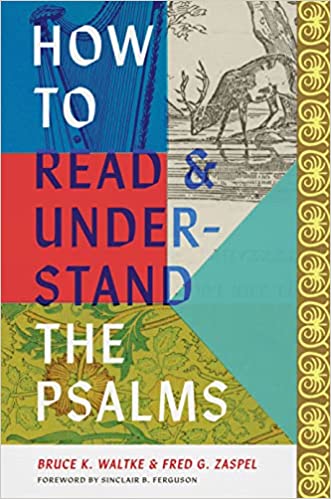A Book Review from Books At a Glance
by G. T. Tran
Summary of Content
A few years ago, I made an ambiguous goal to read everything Bruce Waltke had written. Having acquainted myself with some of Waltke’s major works, I was delighted to discover that he and Fred G. Zaspel recently coauthored How To Read and Understand the Psalms. In this book, they aim to “equip Christians to read the Psalms profitably” (xviii). The reason is as follows: “The complexities of the book of Psalms present unique challenges to interpretation, and even its poetry requires thoughtful reflection. The historical setting of the Psalms themselves is distant from ours, and even the (old covenant) religious setting differs considerably from ours. All this requires significant learning on our part to maximize our understanding” (7-8).
The book has fifteen chapters and three appendixes. Roughly speaking, half of the chapters deal with general issues in Psalms studies (e.g., chaps. 1-5, 7, 15, appendixes 1-2), while the other half explains rhetorical techniques and demonstrates how these techniques are applied to various types of psalms (e.g., chaps. 6, 8-14, appendix 3).
Here’s a glance at the table of contents:
Chapter 1: Introduction to the Psalms
Chapter 2: Hermeneutics: Interpreting the Psalms as Believers
Chapter 3: The Historical Setting of the Psalms
Chapter 4: The Royal Orientation of the Psalms
Chapter 5: The Liturgical Setting of the Psalms
Chapter 6: Hebrew Poetry
Chapter 7: Form Criticism and Psalm Forms
Chapter 8: Praise Psalms
Chapter 9: Petition-Lament Psalms
Chapter 10: Individual Songs of Grateful Praise
Chapter 11: Songs of Trust
Chapter 12: Messianic Psalms
Chapter 13: Didactic Psalms
Chapter 14: Rhetorical Devices and Structures
Chapter 15: The Final Arrangement of the Psalter
Appendix 1: Superscripts, Postscripts, or Both
Appendix 2: A Canonical Process Approach to the Psalms
Appendix 3: Summary of Psalm Forms
Evaluation of Content
The book stands out for at least two reasons. First, Waltke and Zaspel explain their concepts with ample illustrations from the Psalter. For example, after noting some distinct elements of the petition-lament psalms (237-38), the authors give us a sample of 15 psalms, showing how each psalm displays the elements they observe (238-304). Similarly, when discussing specific features in the praise psalms (173-74), the authors sample 10 psalms (174-231). The sheer number of examples helpfully illustrate Waltke and Zaspel’s ideas, making them concrete and easy to understand.
Second, the book interacts with recent scholarship. Although Waltke’s previous lectures on Biblical Training (and Biblical Learning) form the basis of the book, he and Zaspel state that “much more has been added” (xvii-xviii). Indeed, I was intrigued to discover recent works on the Psalms in the bibliography, such as J. M. Hamilton’s commentaries (2021), D. A. Gundersen’s dissertation (2015), and P. Ho’s monograph (2019). Instead of letting their readers drink from a stagnant pond of knowledge, Waltke and Zaspel offer them a fresh drink from the constant stream of biblical scholarship.
Overall, in this book, Waltke and Zaspel set out to equip readers to “read the Psalms profitably” (xviii), and they certainly succeed in that goal! Making my way through the book is like sitting in a MasterClass on the Psalms. I enjoy the book very much and cannot recommend it highly enough!
G. T. Tran
